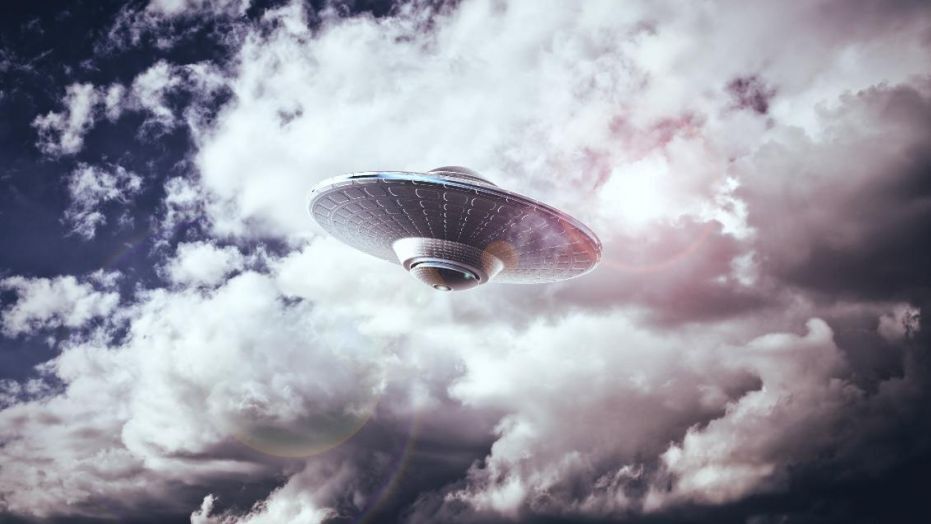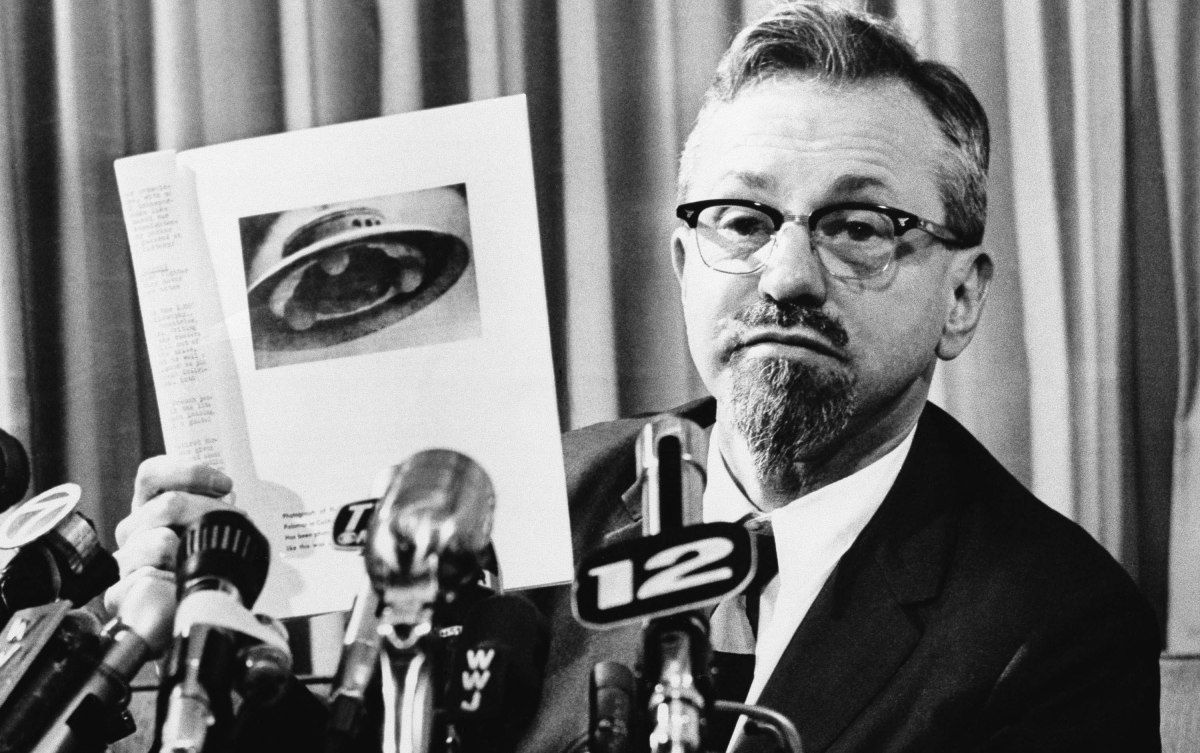UFOs Deserve Scientific Investigation
Article by Ravi Kopparapu and Jacob Haqq-Misra July 27, 2020 (scientificamerican.com)
• UFOs have been back in the news because of “unidentified aerial phenomena” videos officially released by the Pentagon. But the UFO phenomenon is a worldwide occurrence. Scientists in several other countries have studied them. Shouldn’t American scientists choose to investigate and curb the speculation around them? An interdisciplinary scientific investigation is needed, while discarding the taboo surrounding this phenomenon.
• Such unexplained UFO cases drew interest by scientists during the 1960s. As a result, the US Air Force funded a scientific group at the University of Colorado, headed by physicist Edward Condon, to review UFO cases from 1966 to 1968. The resulting ‘Condon Report’ concluded that further study of UFOs was unlikely to be scientifically interesting. Concerns over the inadequacy of the methods used by the Condon Report culminated with a debate sponsored by the American Association for the Advancement of Science (AAAS) in 1969, with participation by scholars such as Carl Sagan, J. Allen Hynek, James McDonald, Robert Hall and Robert Baker.
• Regarding the 1969 scientific debate, Sagan wrote of the “strong opposition” by scientists who feared that AAAS sponsorship of the debate would lend credence to ‘unscientific’ ideas. While Sagan himself dismissed the extraterrestrial hypothesis, he still claimed that the UFO subject was worthy of scientific inquiry.
• We, as scientists, should be cautious of outright dismissal of the UFO phenomenon by assuming that every instance has a “scientific” explanation. We must let scientific curiosity be the spearhead of understanding such phenomena. But these recent Navy pilots’ accounts of UFO sightings have failed to generate similar interest among the scientific community.
• Why should astronomers, meteorologists, and planetary scientists care about these UFO events? Because we are scientists. Curiosity is the reason we became scientists. UFOs represent observations that are waiting to be explained, just like any other science discovery. A systematic investigation is essential in order to bring the phenomena into mainstream science. Collection of hard data is paramount to establishing any credibility to the explanation of the phenomena. A rigorous scientific analysis is sorely needed, by multiple independent study groups.
• The transient nature of UFOs, and the unpredictability of when and where the next event will happen, is one of the main reasons why UFOs have not been taken seriously in science circles. But how can one identify a pattern without systematically collecting the data in the first place? In astronomy, the location and timing of gamma-ray bursts, supernovae and gravitational waves are similarly unpredictable. By meticulously collecting data from each occurrence and systematically observing them, we now recognize these as natural phenomena arising from stellar evolution. Similarly, gathering UFO data with tools such as radar, thermal, and visual observations would be immensely helpful. Not every case is a classified military aircraft or strange weather formation.
• As Sagan concluded at the 1969 debate, “scientists are particularly bound to have open minds; this is the lifeblood of science.” We do not know what UFOs are. This is precisely the reason that we as scientists should study them.
• [Editor’s Note] Back in the 1960s, the Condon Report didn’t stand a chance of seeing the light of ‘scientific curiosity and impartiality’. The deep state jackels had just gotten away with assassinating a sitting US President, and they felt invincible. The 1969 Condon Report was a set up, just like the Warren Commission. Even Carl Sagen, who played the role of the open-minded advocate of scientific curiosity, was later revealed to be an actual member of the top-secret Majestic 12 deep state UFO government debunking committee.
The question is, has the deep state lost its absolute control over the modern scientific community to a point where there are, in fact, some independent scientists who would make an impartial inquiry into the UFO phenomenon and reveal their objective findings to the public? Or will these scientists continue to bow to the deep state governmental authorities and private foundations that provide the funding for their work, and thus their livelihood?
UFOs have been back in the news because of videos initially leaked, and later confirmed, by the U.S. Navy and officially released by Pentagon that purportedly show “unidentified aerial phenomena” (UAP) in our skies. Speculations about their nature have run the gamut from mundane objects like birds or balloons to visitors from outer space.
It’s difficult, if not impossible, to say what these actually are, however, without context. What happened before and after these video snippets? Were there any simultaneous observations from other instruments, or sightings by pilots?
Judging the nature of these objects (and these seem to be “objects,” as confirmed by the Navy) needs a coherent explanation that should accommodate and connect all the facts of the events. And this is where interdisciplinary scientific investigation is needed.
The proposal to scientifically study UAP phenomena is not new. The problem of understanding such unexplained UAP cases drew interest by scientists during the 1960s, which resulted in the U.S. Air Force funding a group at the University of Colorado, headed by physicist Edward Condon, to study UAP from 1966 to 1968. The resulting Condon Report concluded that further study of UAP was unlikely to be scientifically interesting—a conclusion that drew mixed reactions from scientists and the public.
Concerns over the inadequacy of the methods used by the Condon Report culminated with a congressional hearing in 1968 as well as a debate sponsored by the American Association for the Advancement of Science (AAAS) in 1969 with participation by scholars such as Carl Sagan, J. Allen Hynek, James McDonald, Robert Hall and Robert Baker. Hynek was an astronomy professor at the Ohio State University and led the Project Blue Book investigation, while McDonald, who was a well-known meteorologist and a member of the National Academy of Sciences (NAS) and AAAS, performed a thorough investigation of UAP phenomena. Sagan, a professor of astronomy at Cornell University, was one of the organizers of the AAAS debate. He dismissed the extraterrestrial hypothesis as unlikely but still considered the UAP subject worthy of scientific inquiry.
Recent UAP sightings, however, have so far failed to generate similar interest among the scientific community. Part of the reason could be the apparent taboo around UAP phenomena, connecting it to the paranormal or pseudoscience, while ignoring the history behind it. Sagan even wrote in the afterword of the 1969 debate proceedings about the “strong opposition” by other scientists who were “convinced that AAAS sponsorship would somehow lend credence to ‘unscientific’ ideas.” As scientists we must simply let scientific curiosity be the spearhead of understanding such phenomena. We should be cautious of outright dismissal by assuming that every UAP phenomena must be explainable.
FAIR USE NOTICE: This page contains copyrighted material the use of which has not been specifically authorized by the copyright owner. ExoNews.org distributes this material for the purpose of news reporting, educational research, comment and criticism, constituting Fair Use under 17 U.S.C § 107. Please contact the Editor at ExoNews with any copyright issue.


